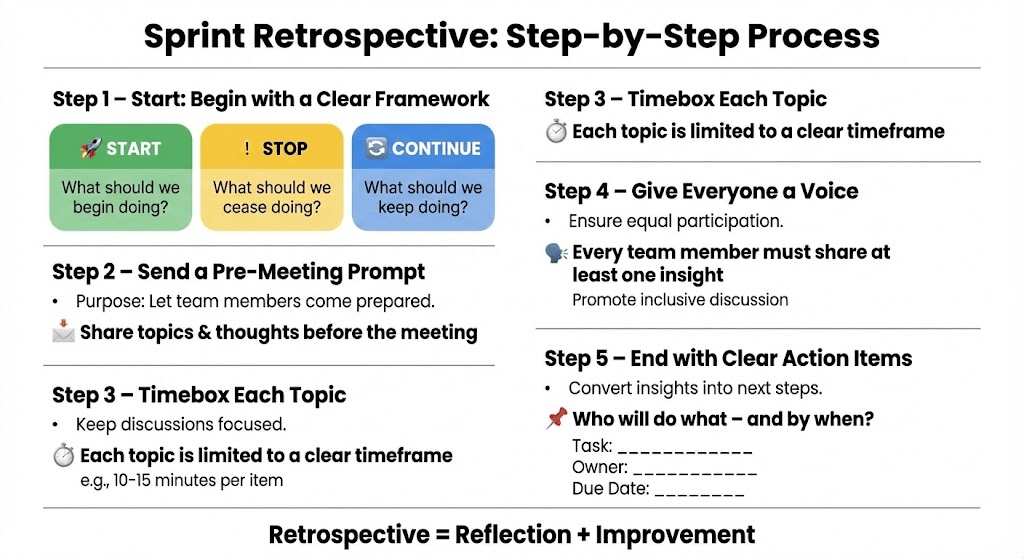Sprint retrospectives are an essential part of Agile project management, helping teams review their work, celebrate successes, and identify areas for improvement. But still, one common question arises: How long should this crucial meeting last? Finding the perfect duration is an important thing. If it’s too short, and the possibilities of discussions lack depth, or if it’s too long, and the team disengages.
As per Echometer analysis, 30,000 retrospective meetings showed that most last around 1 hour and 11 minutes, and only 7% go beyond two hours. Interestingly, teams felt most satisfied when the meetings were short, between 31 and 45 minutes. In that time range, they gave an average satisfaction score of 8.5 out of 10, proving that focused and shorter sessions can be just as effective as long ones.
Why is retrospective length important?
| Time is limited in any sprint. |
If a retrospective runs too long, people get tired, repeat the same points, and lose interest. That defeats the purpose of improving the process. But if it ends too quickly, the team may only discuss surface issues and never reach the real cause of their problems, leading to the same issues coming back in the next sprint. The right duration gives space for meaningful discussion without wasting development time.
Standard Guideline – How Much Time to Allocate:
The most common and practical rule of thumb is to allocate 45 minutes to 1 hour for every week of the sprint.
This translates to:

This formula isn’t arbitrary. It scales the reflection time with the amount of work completed. A longer sprint naturally generates more events, data, and experiences to discuss. This timeframe provides a structured container to properly explore:
- What happened,
- Why it happened, and
- What to do next.
Factors That Influence This Ideal Time:
The 45-minute-per-week rule is a good starting point, but every team is different. You may need to adjust the time based on these factors:
Team Experience
New teams mostly need more time to build trust and understand how retrospectives work. Experienced teams usually move faster and need less time.
Sprint Results
If the sprint was very successful or had major issues, more time may be needed to celebrate wins or explore what went wrong in detail.
Meeting Purpose
If the retrospective focuses on one specific problem, like communication gaps, it can be shorter. But if you are reviewing the entire sprint, you may need more time.
Making the Most of Your Retrospective Time:
A well-planned 60-minute retrospective can be more productive than a long, unstructured one. To make the session effective:

| The aim isn’t to use more time; it’s to use time wisely and drive improvement. |
If you want to design the best-suited ideal Sprint Retrospectives for your team, build a strong Agile foundation with CSM training. It helps you apply the right framework, encourage collaboration, and continuously improve performance, turning every sprint into a learning opportunity that boosts team efficiency and project results.
Conclusion:
The “perfect” length is what works for your team. Use the standard guideline as a baseline, then inspect and adapt. Ask your team in the next retrospective if the meeting length felt right. Their feedback is the most valuable metric of all for creating a ceremony that gives real momentum to your continuous improvement.


